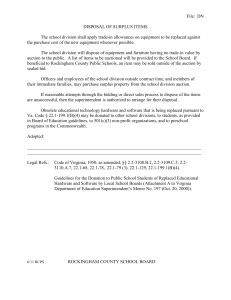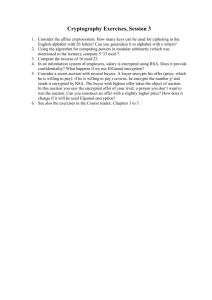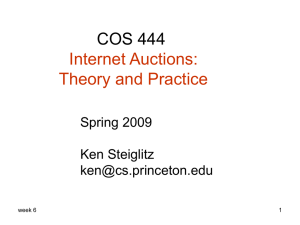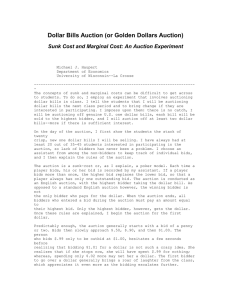Chapter 9 Bonus Quiz
advertisement
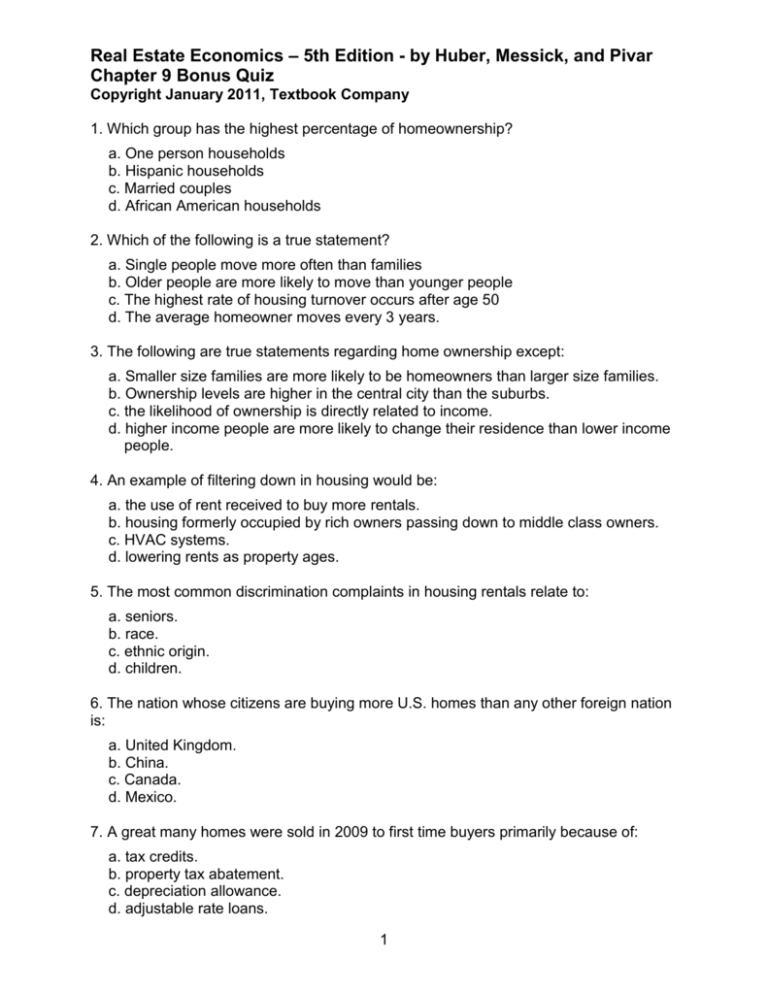
Real Estate Economics – 5th Edition - by Huber, Messick, and Pivar Chapter 9 Bonus Quiz Copyright January 2011, Textbook Company 1. Which group has the highest percentage of homeownership? a. One person households b. Hispanic households c. Married couples d. African American households 2. Which of the following is a true statement? a. Single people move more often than families b. Older people are more likely to move than younger people c. The highest rate of housing turnover occurs after age 50 d. The average homeowner moves every 3 years. 3. The following are true statements regarding home ownership except: a. Smaller size families are more likely to be homeowners than larger size families. b. Ownership levels are higher in the central city than the suburbs. c. the likelihood of ownership is directly related to income. d. higher income people are more likely to change their residence than lower income people. 4. An example of filtering down in housing would be: a. the use of rent received to buy more rentals. b. housing formerly occupied by rich owners passing down to middle class owners. c. HVAC systems. d. lowering rents as property ages. 5. The most common discrimination complaints in housing rentals relate to: a. seniors. b. race. c. ethnic origin. d. children. 6. The nation whose citizens are buying more U.S. homes than any other foreign nation is: a. United Kingdom. b. China. c. Canada. d. Mexico. 7. A great many homes were sold in 2009 to first time buyers primarily because of: a. tax credits. b. property tax abatement. c. depreciation allowance. d. adjustable rate loans. 1 8. Which of the following loans would offer the lowest initial loan payments? a. 40-year loan b. Interest only loan c. 5-25 loan d. Option ARM 9. The affordability index: a. differs for every buyer. b. is based on a 20-year loan. c. is based on the median price of homes in the area and the median income. d. allows 40 percent of household income to be used for housing expenses. 10. The high point in home ownership rates was reached in 2004. What percent of households were homeowners? a. 37 percent b. 43 percent c. 59 percent d. 69 percent 11. Which group of households is growing the fastest? a. Single person b. Married couples c. Single parent d. Sibling 12. Who actually determines housing prices? a. Buyers b. Sellers c. Brokers d. Appraisers 13. When the vacancy rate is rising, an astute owner should fist consider: a. raising rents. b. lowering rents. c. requiring longer leases. d. giving rent concessions. 14. An auction “without reservation” means: a. bidders do not need prequalification. b. owners can reject any bid. c. the auctioneer sets the price which must be accepted by the bidder. d. seller agrees to accept highest bid. 15. A stealth auction is: a. an invitation only auction. b. an Internet auction publicized only on the Internet. c. a silent auction where bidder submit one sealed bid. d. an auction conducted after foreclosure sale has been scheduled. 2 Real Estate Economics – 5th Edition - by Huber, Messick, and Pivar Chapter 9 Bonus Quiz Answers Copyright January 2011, Educational Textbook Company 1. c (p) 2. a (p) 3. b (p) 4. b (p) 5. d (p) 6. c (p) 7. a (p) 8. d (p) 9. c (p) 10. d (p) 11. a (p) 12. a (p) 13. d (p) 14. d (p) 15. b (p) 3






